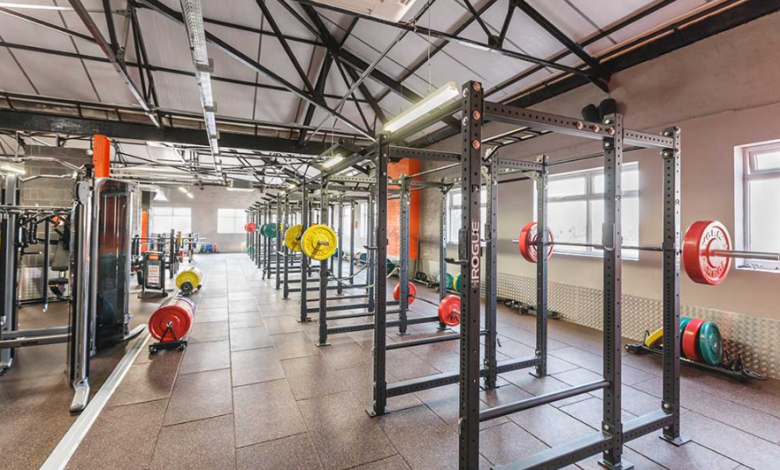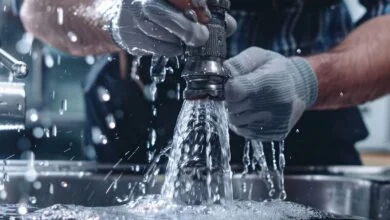Reliable Flooring for Fitness Facilities

In the modern fitness industry, creating a safe, high-performing, and durable environment is essential for attracting clients and protecting long-term investment. While many gym owners focus on equipment and aesthetics, the true foundation of a successful facility lies beneath your feet. That’s where rubber gym flooring plays a critical role. Known for its durability, comfort, and safety, this flooring option has become a top choice for commercial gyms, home setups, and fitness studios of all sizes.
This article explores the benefits of rubber gym flooring, types available, how to choose the best option for your gym, and maintenance tips that ensure your flooring performs well for years to come.
Why Choose Rubber Gym Flooring?
Fitness spaces are exposed to constant wear and tear—heavy foot traffic, intense workouts, weight drops, and frequent cleaning. Ordinary flooring simply doesn’t last in such conditions. That’s why gym owners and designers prefer rubber gym flooring, which offers long-lasting performance and supports a wide range of fitness activities.
1. Durability Under Pressure
Rubber is built to withstand thousands of workouts, repeated impact, and heavy equipment. It resists cracking, denting, and tearing, making it perfect for high-traffic fitness zones.
2. Shock and Impact Absorption
Dropped barbells or jumping exercises can be tough on joints and subfloors. Rubber provides effective cushioning that absorbs energy, minimizing injury risk and structural damage.
3. Anti-Slip Surface for Safety
Workout environments often involve sweat and moisture. Rubber flooring maintains traction, helping prevent slips even in intense cardio or strength zones.
4. Noise Reduction
Gyms are inherently noisy, but rubber absorbs sound from weights, machines, and foot movement, creating a quieter, more focused training atmosphere.
5. Equipment Protection
The resilience of rubber helps protect the life of your equipment by absorbing vibrations and minimizing direct contact with the subfloor.
See also: Cash Flow Rescue Creative Debt Collection for Small Businesses
Types of Rubber Gym Flooring
The versatility of rubber gym flooring comes from its variety of forms. Each type offers unique advantages based on space size, budget, and intended use.
Rubber Tiles
Rubber tiles are square-shaped mats that interlock like puzzle pieces. They are one of the easiest options to install and replace.
- Ideal for: Free weight areas, functional zones
- Pros: Modular, easy installation, replace individual pieces
- Cons: Visible seams can collect dust if not sealed properly
Rubber Rolls
Rubber rolls are long sheets of flooring that offer seamless coverage over large areas. They are commonly used in commercial gyms for their clean and professional appearance.
- Ideal for: Cardio areas, full-floor setups
- Pros: Fewer seams, strong under machines, stable surface
- Cons: Heavier, may require professional installation
Rubber Mats
Individual mats are used for placing under machines or workout stations. These are useful when full-floor coverage is not needed.
- Ideal for: Under squat racks, treadmills, or bikes
- Pros: Portable, cost-effective, targeted protection
- Cons: Can shift if not anchored or connected
How to Choose the Right Rubber Gym Flooring
Selecting the correct rubber flooring depends on several factors. Here’s what to consider:
1. Type of Exercise Performed
Heavy lifting demands thicker, denser flooring, while stretching or cardio workouts may be suitable with thinner mats.
- Yoga/stretching: ¼ inch
- Cardio/light weights: ⅜ inch
- Weight training: ½ inch or more
- Olympic lifting: ¾ inch and above
2. Size of the Area
Tiles are excellent for smaller or custom-shaped spaces. Rolls are better for large, open areas that require seamless installation.
3. Installation Preference
If you prefer a DIY approach, tiles and mats are best. Rolls and thicker flooring often need professional tools or adhesives.
4. Appearance and Branding
Rubber flooring comes in different finishes—plain black, flecked with color, or custom-branded with logos. Consider flooring that complements your gym’s branding and atmosphere.
5. Budget and Maintenance
Initial investment varies based on thickness, density, and source material. Recycled rubber is often more affordable and environmentally friendly without sacrificing quality.
Key Features to Look For
When purchasing rubber gym flooring, focus on quality indicators that affect durability and user satisfaction:
- High density: Better resistance to compression and greater shock absorption
- Textured surface: Ensures better grip and traction
- Non-porous finish: Easier to clean and more resistant to water and bacteria
- Beveled edges: Smooth transitions to prevent tripping hazards
Zones That Benefit Most from Rubber Flooring
Rubber flooring enhances performance and safety in various parts of the gym:
| Gym Area | Suggested Flooring Type |
|---|---|
| Free Weight Zone | ¾ inch rubber tiles or rolls |
| Cardio Equipment Area | ⅜ inch rubber rolls |
| Functional Training Zone | ½ inch interlocking tiles |
| Group Class Studio | ¼ to ⅜ inch rubber flooring |
| Reception Area | Textured rubber mats or tiles |
| Locker Rooms | Water-resistant rubber tiles |
Matching flooring type and thickness to activity helps avoid premature wear and improves user experience.
Maintenance and Cleaning
Rubber gym flooring is designed to handle tough environments, but it still requires regular upkeep to stay in top shape:
- Daily: Sweep or vacuum dust and debris
- Weekly: Mop using a mild pH-neutral cleaner
- Avoid: Harsh solvents, acidic chemicals, and abrasive scrubbers
- Tip: Install entrance mats to reduce dirt tracked in by gym-goers
Regular cleaning helps preserve both appearance and hygiene, which is especially important in shared public spaces.
Environmental and Health Considerations
Many rubber gym flooring options today are made from recycled materials, particularly old tires. This not only makes the product more affordable but also contributes to sustainability efforts. Make sure to choose low-VOC (volatile organic compounds) products for better indoor air quality and user safety.
Final Thoughts
The value of rubber gym flooring goes far beyond aesthetics. It’s about functionality, safety, noise control, and long-term cost savings. Whether you’re building a new gym or upgrading an existing space, investing in high-quality rubber flooring ensures that every workout—no matter how intense—is supported by a foundation designed to last.
From strength zones to stretching areas, rubber flooring proves itself as the most reliable, versatile, and gym-friendly option available. It protects your investment, improves member satisfaction, and reinforces the professional standards of your facility.




